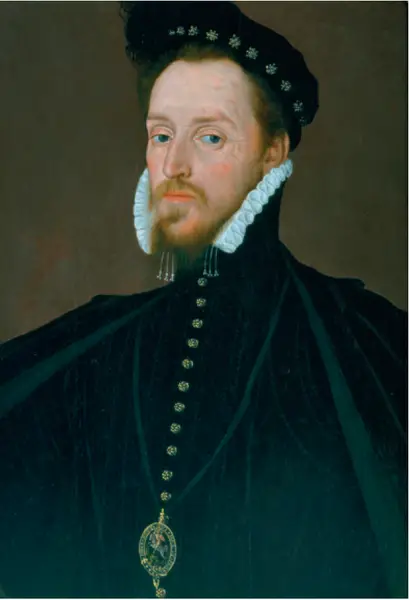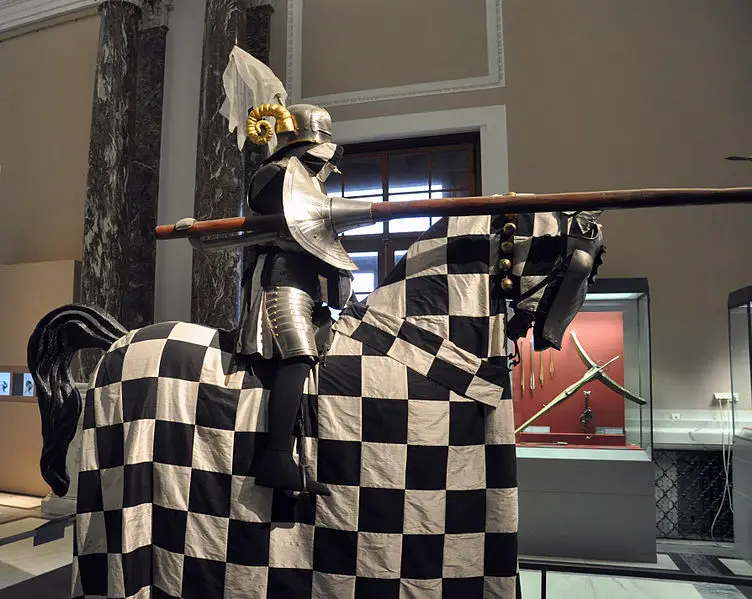 Alessandro Farnese was born on 29 February 1468 at Canino, Latium, which was in the Papal States. Educated at the University of Pisa and Lorenzo de Medici's court, he was prepared to take on the career of apostolic notary. Changing course, Alessandro joined the Roma Curia in 1491 at the age of approximately 23 and was quickly promoted by the new pope Alexander VI to a cardinal-deacon position at Santi Cosma e Damiano two years later. Alessandro had the early makings of a fine career with the church. His family already boasted of Pope Boniface VIII.
Alessandro Farnese was born on 29 February 1468 at Canino, Latium, which was in the Papal States. Educated at the University of Pisa and Lorenzo de Medici's court, he was prepared to take on the career of apostolic notary. Changing course, Alessandro joined the Roma Curia in 1491 at the age of approximately 23 and was quickly promoted by the new pope Alexander VI to a cardinal-deacon position at Santi Cosma e Damiano two years later. Alessandro had the early makings of a fine career with the church. His family already boasted of Pope Boniface VIII.
Alessandro's sister Giulia Farnese was a mistress to Pope Alexander VI, which afforded Alessandro the pejorative “the petticoat cardinal.” His surname of Farnese unfortunately rhymed with a slang term for female genitalia, which is best not said in polite circles, and he was also called Cardinal “Female Genitalia.” This brother-in-law relationship to Alexander VI could explain Alessandro's swift rise through the curial ranks.
On his way to becoming pope, Alessandro held at least a dozen positions, including those of bishop and cardinal-bishop for various areas. Elected pope in 1534, Alessandro Farnese took the title of Paul III. He was the fourth pope during the Protestant Reformation and took decisive action, including excommunicating Henry VIII for the second and final time. He was supportive of the Catholic Reformation, as well.
Henry VIII was initially excommunicated in 1533 by Pope Clement VII after Henry's marriage to Katharine of Aragon was annulled and the marriage with Anne Boleyn declared valid. After the executions of Sir Thomas More and Bishop John Fisher in 1535, Paul III tried to take away Henry's right to rule England. However neither Francis I of France nor Charles V, Holy Roman Emperor, had any desire to assist Paul III in enforcing the bull, and Henry VIII remained on the English throne.
Paul III patronized Cardinal Reginald Pole, the noble Plantagenet cousin and bitter enemy of Henry VIII. Pole was a member of the Spirituali, church members who wished to reform the church from the inside, out. Having arrived as an exile in Rome in 1532, Pole enjoyed the support of Paul III and was afforded high hopes by Paul III that Pole would be successful in reforming the Catholic Church.
The straw that broke the camel's back was heaped on by Henry in 1538, when more monasteries were broken up by Henry's order. The new papal bull was allowed to be published in places other than those originally specified in 1538 by Paul III. To add insult to injury, Paul III did his best to secure the papal hat for Pole, though Pole was later unsuccessful in becoming pope.
Paul III was a patron of the arts. He asked Michelangelo to remodel the Campidoglio, which Michelangelo did to wonderful effect. As the piazza for Capitoline Hill and one of the original sacred sites in Rome, this was a very important commission for Michelangelo and a noteworthy patronage for Paul III.
He enjoyed throwing a party, too. He had a grand posesso procession in 1535, which was the ceremony and celebration marking his ascension to the position of pope, and brought back the Roman carnival in 1536. Also in 1536, Paul III held a magnificent celebration for Charles V's victory over the Turks in late 1535. Feted as the liberator and defender of Christianity, Charles V was by 1535 the most powerful man in Europe since Charlemagne. There was also the matter of thousands of Spanish troops, loyal to the Emperor, on Italian soil, which may have motivated Paul III to have such a grand reception for Charles V.
A family man, one of Paul III's three sons and a grandson were made cardinals upon his ascendancy to the throne. Paul III also looked after the Borgia family, sending a cardinal's hat to Alexander VI's nephew, who sadly died just before receiving it. Paul tried to follow Alexander's example by making his son Duke of Parma and Piacenza, but that son was ultimately murdered.
Paul III, Alessandro Farnese, finally died on 10 November 1549, at the age of 81. A family man interested in reforming the Catholic Church and patronizing the arts, Alessandro promoted and cared for his family as best he could. He attempted to reform the church through councils and organizations, all while overseeing the construction of gorgeous buildings and piazzas. He brought back some glamour to the papacy. He stood up against Henry VIII in his pursuit to make the church whole again. Paul III was truly a culmination of the different popes during the early half of the 16th century and though he certainly had his faults, he did an excellent job with what he had and with what was acceptable papal behaviour at the time.
Heather R. Darsie lives in the United States with her family and three parrots. She works in the legal field, with a focus on children. She obtained a Bachelor of Arts degree in German Languages and Literature, then a Juris Doctorate in American jurisprudence, and studied abroad in Costa Rica and France. Heather has always loved history. She first became acquainted with Elizabeth I when she was in middle school and chose to write a book report about her. Since then, she has always held an interest in the Renaissance and its numerous enigmatic citizens, with particular focus on the history of England and Italy. She is currently working on a book on the heraldry of Tudor women and is also researching Anne of Cleves.
Sources and Suggested Reading
Image: Pope Paul III by Titian.
- Collins, Roger. Keepers of the Keys of Heaven: a History of the Papacy. Philadelphia: Basic Books, a division of Perseus Books Group (2009).
- de Jong, Jan L. The Power and the Glorification: Papal Pretensions and the Art of Propaganda. University Park, Pennsylvania: Pennsylvania State University Press (2013).
- Greengrass, Mark. Christendom Destroyed: Europe 1517 –1648. New York: Penguin Books (2014).
- Gamrath, Helge. Farnese: Pomp, Power and Politics in Renaissance Italy. Rome: l’Erma di Bretschneider (2007).
- Letters and Papers, Foreign and Domestic, Henry VIII, Volume 13 Part 2. 1087.



Wondering if there is a book available on Pope Paul lll please. Thanks for your assistance.
I don’t know of a book that focuses on him, just books about the papacy in that period. Sorry!